Want to keep your small garden buzzing with life? Try seasonal crop rotation! Mix it up with nitrogen-fixing peas that refresh your soil, followed by vibrant greens like spinach. Then, plant hearty tomatoes in May and zesty peppers in summer! This fun method disrupts pest lifecycles and enriches nutrients, creating a happy garden ecosystem. Don’t forget colorful flowers for a delightful touch! Curious about how to design your rotation plan or manage pesky insects? There’s more to explore!
Understanding Crop Rotation
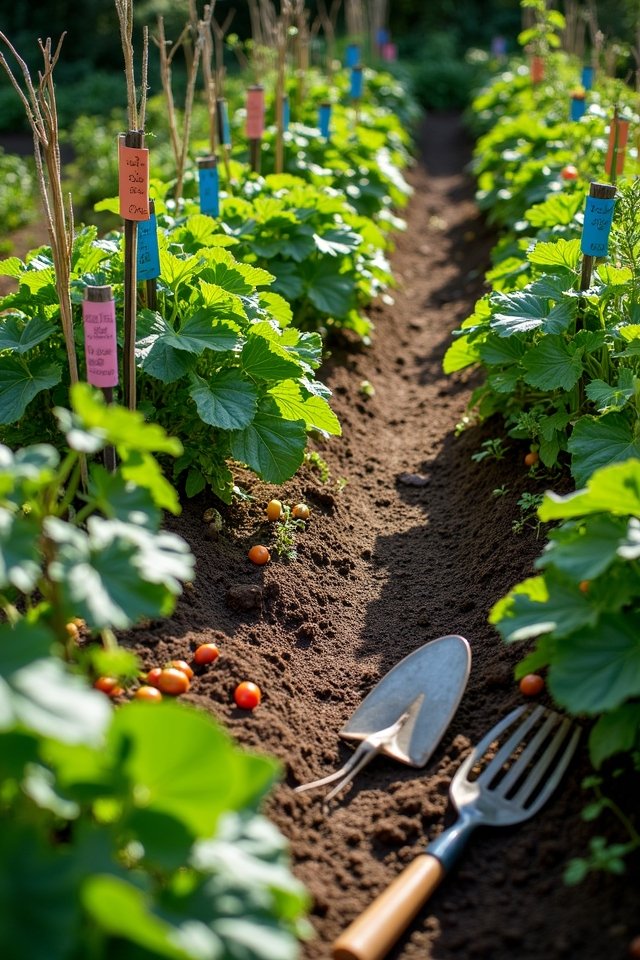
Understanding crop rotation is like giving your garden the ultimate health boost! Imagine this: you’re swapping out crops like a chef changing a menu. Each time you plant, you’re invigorating your soil, preventing pests, and enriching nutrients. For instance, after luscious tomatoes, toss in nitrogen-fixing legumes like peas. They’ll refresh your soil while delighting your senses! Not only does crop rotation break disease cycles, but it’s also a genius way to enhance biodiversity— a little dance for your garden! Have you ever noticed how it keeps everything exciting? It’s like giving your plants a well-deserved vacation, letting them rejuvenate. So, get creative! Your innovative garden deserves this fantastic rhythm of rotation. Ready to jump in? Let’s grow smarter together!
Benefits of Crop Rotation in Small Gardens
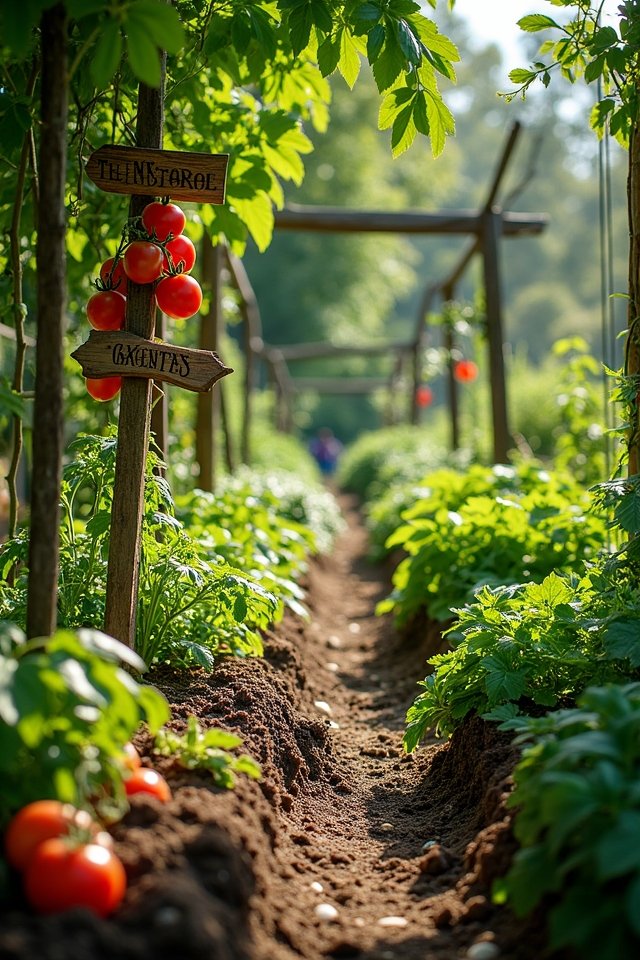
You know what’s amazing? Crop rotation isn’t just for big farms; it’s a game-changer in your small garden too! By switching up your plants, you’re enhancing soil health and creating a magical balance. Here are a few incredible benefits you can’t ignore:
- Boosts Nutrients: Different plants absorb different nutrients, keeping your soil rich and healthy.
- Pest Control: Rotating crops disrupts the lifecycle of pests and diseases, so they can’t throw a garden party!
- Improved Growth: Varied roots create a better structure, allowing water and nutrients to flow freely.
- Enhanced Biodiversity: You’ll attract a variety of pollinators, adding color and life to your space!
Seasonal Planting Calendar
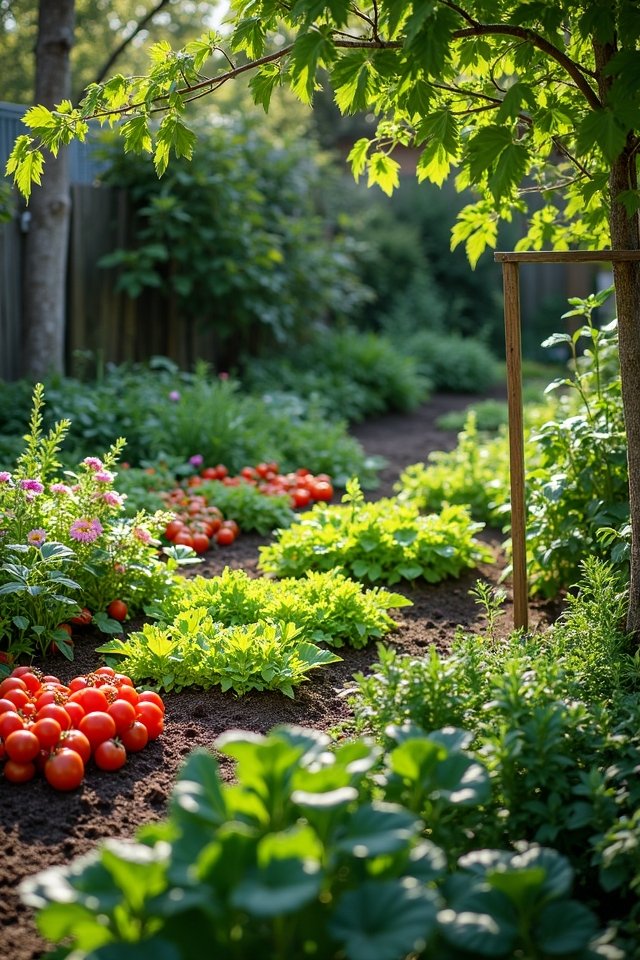
As spring whispers its arrival, you’ll want to grab your gardening gloves and get ready for an exciting seasonal planting adventure! With the warmer days, it’s time to awaken your garden. Consider April for vibrant greens like spinach and lettuce—how invigorating! In May, let the magic unfold with hearty beans and radiant tomatoes. As summer rolls in, your garden will burst into life with zesty peppers and sweet basil. Don’t forget to mix in some colorful flowers for a feast for the eyes! As you plan, imagine your garden as an intricate tapestry, weaving colors and flavors together. Got a favorite crop? Make sure it aligns with your calendar! Timing is everything—let’s make it brilliant!
Choosing the Right Crops
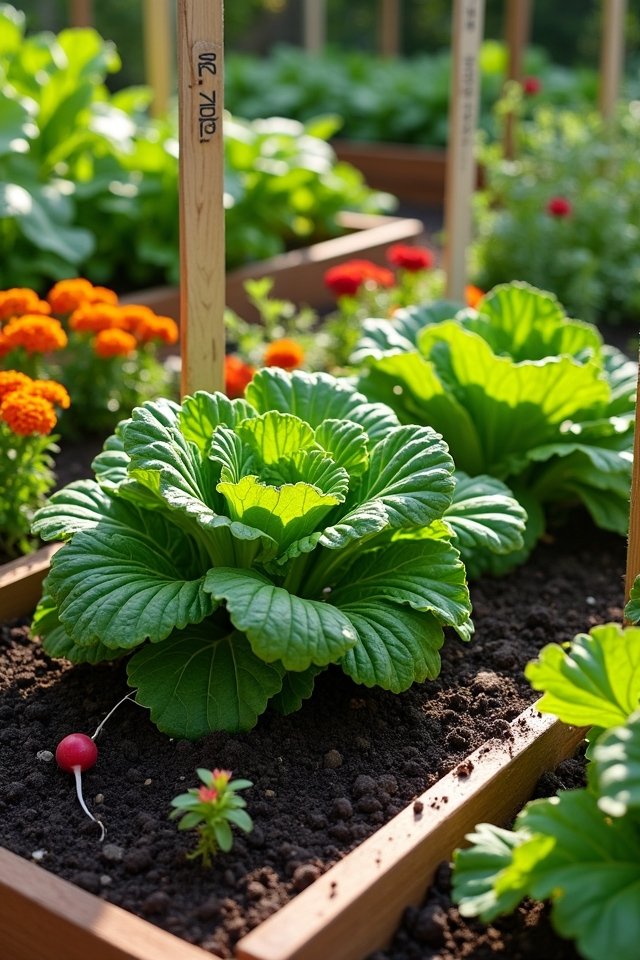
Which crops will bring the most joy to your garden this season? Choosing wisely can turn your tiny patch into a vibrant masterpiece! Let’s plunge into some fabulous options that’ll ignite your taste buds and lift your spirits:
- Cherry Tomatoes – These sweet gems burst with flavor! They’re perfect for snacking or adding to salads.
- Zucchini – A prolific producer, zucchini fills your plates and your heart with warmth. Plus, it’s versatile!
- Greens (like spinach or kale) – Nutritious and quick-growing, they’ll make you feel like a garden rock star!
- Radishes – These crunchy delights are speedy and zesty! They’ll add a peppery kick to your dishes.
Excitement awaits—pick crops that resonate with you and enjoy every moment in your garden!
Implementing a Rotation Plan
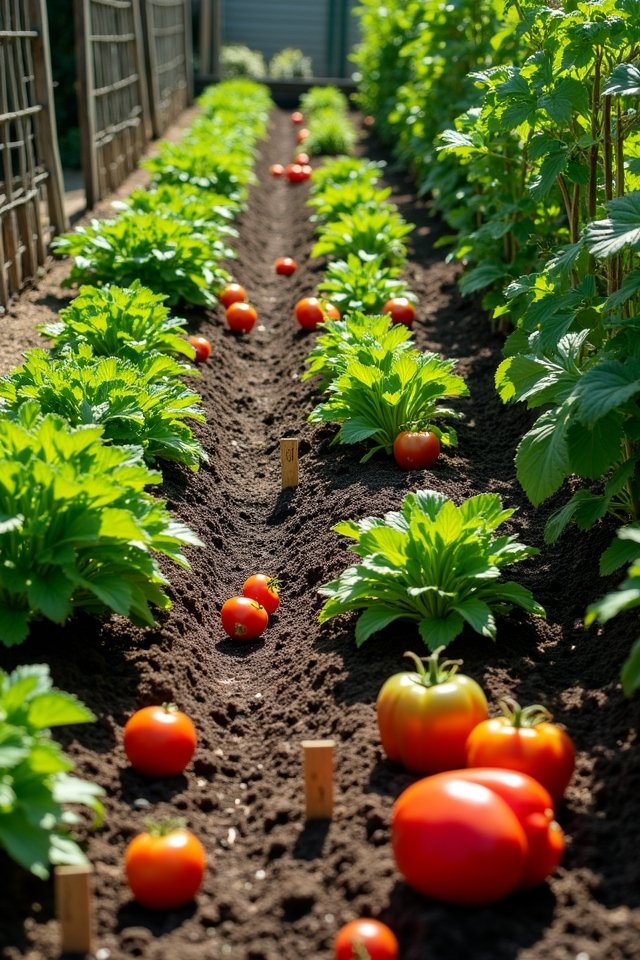
Now that you’ve got a delightful selection of crops ready to plant, it’s time to think about how to keep your garden thriving season after season! First, map out your garden like a treasure map—each crop is a gem waiting to shine. Start with nitrogen-fixers like peas or beans in the spring, then follow up with leafy greens. Picture that vibrant spinach contrasting against the rich earth!
In summer, spice things up with peppers or tomatoes! Rotate to root vegetables, like carrots or beets, in the fall. This keeps soil nutrients balanced—like feeding your garden a balanced diet! Don’t forget to jot it all down. A rotation plan is like a playlist, always keeping your garden’s beat fresh and lively. Happy planting!
Companion Planting Techniques
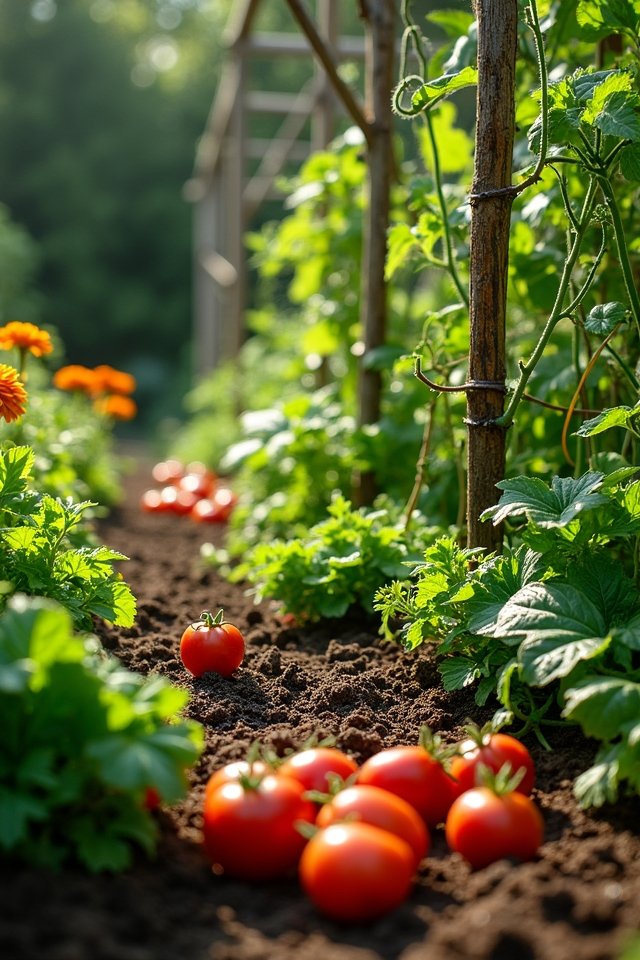
Immerse yourself in the colorful world of companion planting, where your garden buddies can boost each other’s growth like best friends cheering each other on! You’ll love how these pairings create a joyful synergy in your little green paradise! Here are four techniques to contemplate:
- Basil and Tomatoes: Basil enhances tomato flavor while keeping pests at bay!
- Carrots and Onions: These two get along famously, as they repel each other’s pests.
- Beans and Corn: Beans provide nitrogen to corn, and corn acts as a supportive pole!
- Marigolds and Almost Everything: Their bright blooms deter unwelcome critters and boost health.
Soil Health and Fertility
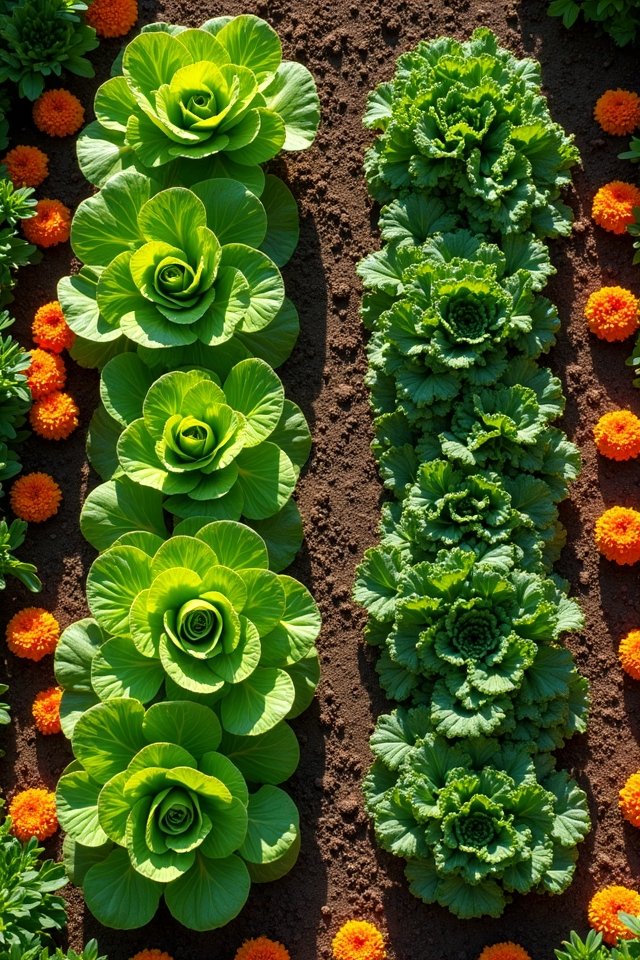
While you might think soil is just dirt, it’s actually a bustling city full of life and nutrients! Imagine millions of tiny organisms partying underground, breaking down compost like you break down the day’s stress with a good book. Healthy soil is alive; it feeds your crops and keeps them vibrant. To jazz things up, try adding organic matter like worm castings or aged manure; it’s like giving your soil a gourmet meal! Regularly rotating your crops can keep nutrients in check, too. Think of it as a potluck; everyone brings something different! So, dig deep, literally and metaphorically. By investing in soil health, you’re not just growing food; you’re cultivating a community of life that nourishes you back!
Managing Pest and Disease Pressure

Just as you wouldn’t invite your in-laws over without a strong strategy for keeping the peace, managing pest and disease pressure in your garden requires a thoughtful approach! Think of your garden as a fortress—every soldier needs a mission and a special skill set. Here’re four innovative strategies to arm yourself against nuisances:
- Crop Rotation: Shift your veggies each season to confuse pests and disrupt disease cycles!
- Companion Planting: Befriend plants that naturally repel harmful insects—like marigolds and basil.
- Regular Monitoring: Inspect plants daily; catching pests early is like spotting a sneeze before a sneeze-fest!
- Natural Predators: Introduce ladybugs or lacewings to feast on aphids—talk about nature’s pest control squad!
Your garden will thrive, ready to shine!
Adapting to Seasonal Changes
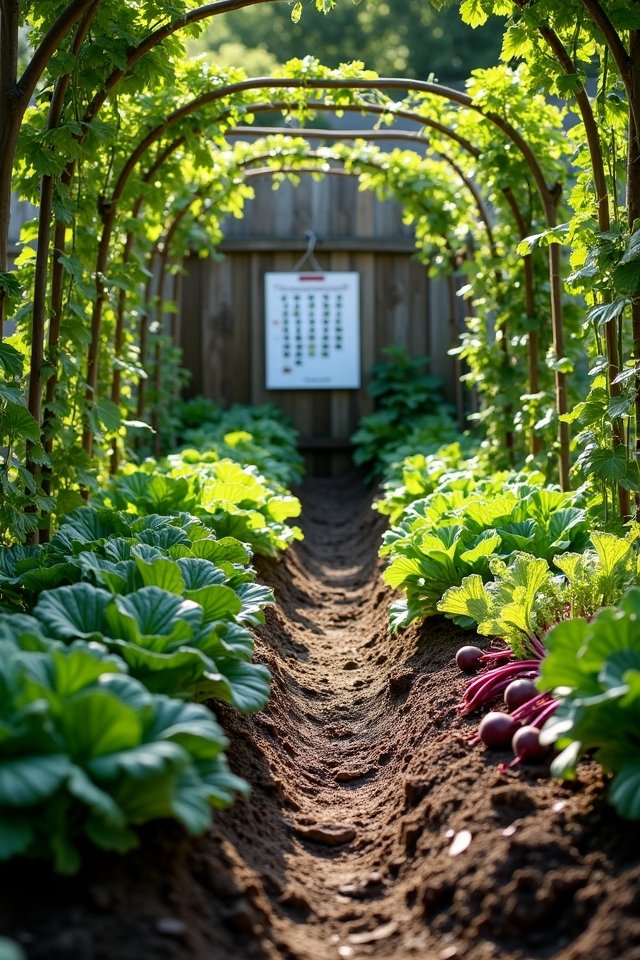
As you welcome each new season into your garden, it’s time to swap your summer shorts for cozy flannels and prepare for the changing demands of your plants! Welcome the rhythm of nature as you shift from sun-kissed tomatoes to crisp kale. Each season’s arrival offers a fresh opportunity—think of autumn as your garden’s cozy sweater, inviting hearty root veggies!
Consider companion planting during these changes. For instance, pairing garlic with your cabbages can deter pests while helping both thrive. Don’t forget to revise your watering routine—cooler months mean less thirst!
Frequently Asked Questions
How Much Space Is Needed Between Different Crop Types?
How much space should you leave between crops? Well, it’s like giving each plant its personal bubble! Generally, aim for a foot between larger crops, like tomatoes and peppers; they love their space! For leafy greens, a few inches works wonders. Think of it like a cozy café, where everyone needs room to breathe and stretch! Experiment, and don’t be shy—with a little trial and error, you’ll soon find your perfect plant pals!
Can I Use the Same Containers for Different Crops?
Absolutely, you can use the same containers for different crops, but think of it like a colorful jigsaw puzzle! Just make sure each crop has what it needs—air, water, and nutrients. For instance, if you plant mint alongside tomatoes, the mint will take over like a mischievous little sibling. Rotate your crops every season to keep soil happy and healthy. It’s like giving your garden a fresh wardrobe—exciting and revitalizing! Ready to mix it up?
What Tools Are Essential for Small-Scale Crop Rotation?
For small-scale crop rotation, you’ll need a few essential tools that keep things running smoothly! Start with a trusty trowel—you’ll dig and plant like a pro. A garden fork comes in handy for loosening soil, while a watering can helps hydrate your precious plants. Don’t forget labels to track what grows where, just like a map for your tasty treasure hunt! Oh, and gloves? They’re your knight’s armor against dirt! How’s that for a growing adventure?
How Do I Track My Crop Rotation Progress?
To track your crop rotation progress, you can use a simple garden journal! Write down what you plant, when you plant it, and how it grows. Just think of it as your garden’s diary! You can even add cheerful doodles or color-coded charts. Ever tried a smartphone app? They can remind you when to rotate! Keep it organized, and soon you’ll have a colorful roadmap of your thriving veggie kingdom! Happy gardening!
Are There Specific Crops to Avoid Rotating Together?
When you’re planning your garden, watch out for certain crops that just don’t get along! For example, tomatoes and potatoes are like two bickering siblings, often attracting the same pests. Also, avoid planting carrots and dill together; it’s like putting oil and water in a cocktail! Keep your garden’s harmony by rotating crops wisely. This way, you’ll create a thriving space that bursts with vibrant flavors, and your plants will thank you!